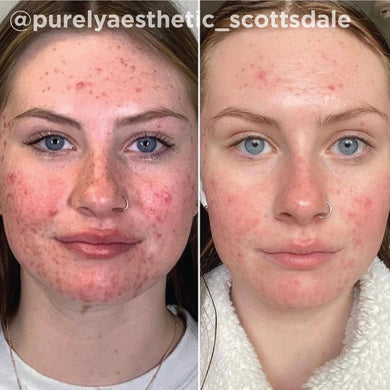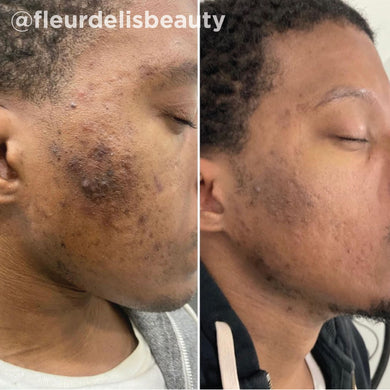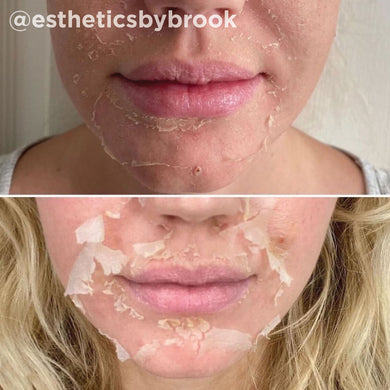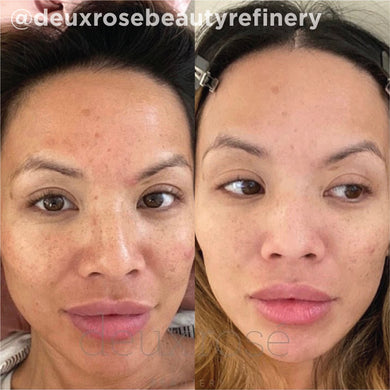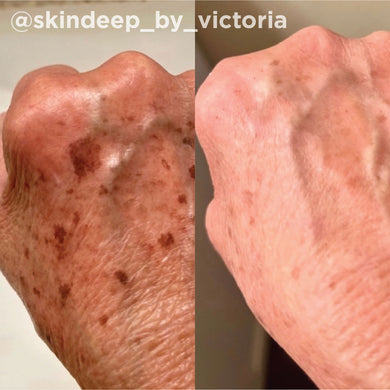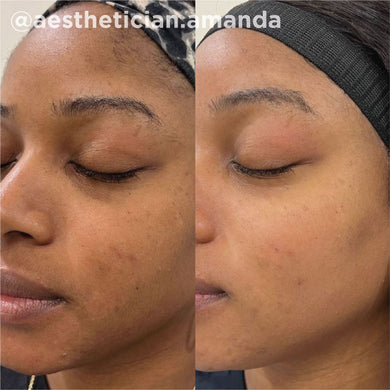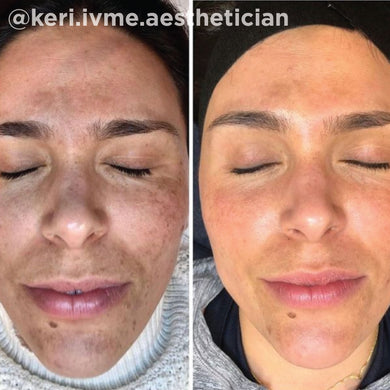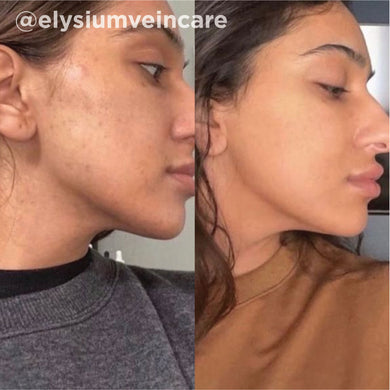Treating Strawberry Skin
Written by Katina Byrd Miles, MD, FAAD as part of The Brown Skin Agenda Initiative.
You may have heard the term “strawberry legs” before, but what exactly is it, and what is it caused by? I’m Dr. Katina Miles, dermatologist at Skin Oasis Dermatology in Gambrills, Maryland, and today I’m going to take you through what "strawberry legs" is and how to prevent and treat it, as part of Vitality Institute’s The Brown Skin Agenda program.
What is Strawberry Legs, anyways?
Strawberry legs is a phrase often used to describe the pink or brown spots on the legs that resemble the look of the seeds on strawberries. In many cases, these spots are simply the normal appearance of hair follicles on the legs. However, there are some skin conditions that can make these follicles look more noticeable, including folliculitis and keratosis pilaris.
What is Folliculitis?
Folliculitis is the inflammation of hair follicles due to a bacterial infection, which most commonly occur after shaving with a dirty or dull razor. There’s also pseudofolliculitis barbae, which is a term used to describe ingrown hairs, and this normally develops after any form of hair removal method that irritates the follicles.
What is Keratosis Pilaris?
Keratosis pilaris is a genetic condition that most commonly affects the upper arms and thighs. It is characterized by small, rough bumps on the hair follicles, caused by an overproduction of keratin in the skin. The keratin blocks the hair follicles, causing the bumps to develop. In those with fair skin tones, keratosis pilaris is typically characterized by white or red bumps, while those with darker skin tones may see darker, brown bumps.
How to Prevent Strawberry Legs
The first rule to preventing and minimizing strawberry legs or keratosis pilaris is to avoid any type of “trauma” or irritation to the arms or legs, as skin inflammation and irritation may result in unwanted dark spots or worsening of bumps and pigmentation. Below are some best practices to preventing and minimizing strawberry legs.
- Follow correct hair removal hygiene. Shave using sharp, clean razors, or hair clippers sanitized after each use.
- Do not reuse unsterilized shaving devices. This increases the risk of infection, hair bumps, and skin irritation.
- When waxing, always go to a trusted professional
- Avoid harsh, coarse, or abrasive scrubs. Instead, opt for a gentle sugar scrub, which is less likely to cause skin irritation. Limit scrubs to once a week
- Avoid aggressively scrubbing the legs. This can cause irritation and increase the risk of folliculitis. This means that harsh puffs, brushes, and sponges should also be avoided
- Lastly, keep your skin hydrated by drinking plenty of water and using a high-quality moisturizer on the affected area
The VI Peel Body Treatment for Strawberry Legs
As a board-certified dermatologist who sees many patients with “strawberry legs,” I was so excited when Vitality Institute announced the launch of their VI Peel Body Treatment in late 2021. It’s been a game changer in helping my patients achieve uniform skin tone and glow. Not only is it good for helping with strawberry legs conditions like keratosis pilaris and folliculitis, but it’s also great at treating other body skin issues like hyperpigmentation, PIH, stretch marks, scarring, acne, and sun damage. It’s scientifically formulated to correctly and safely exfoliate the skin on the body without the pain.
For keratosis pilaris specifically, the VI Peel Body Treatment can help loosen the keratin buildup, as well as lift the dark spots and hyperpigmentation that may come with it.
The VI Peel Body Treatment is safe for all skin types and tones, making it the first ever inclusive chemical peel formulated specifically for the unique skin on your bodies. Before getting a VI Peel Body Treatment, make sure to avoid aggressively scrubbing the skin or using harsh acids at least 1 week prior to the peel. After the procedure, you will receive an aftercare kit that provides instructions and post treatment products to optimize your peel results. More than one peel may be required to treat certain skin conditions, and it’s always good to consult with your practitioner for your detailed treatment plan. To maintain your results, a high-quality alpha hydroxy acid (AHA) cleanser and treatment moisturizer may be used daily to help keep the skin in a healthy exfoliative state. In addition, make sure to keep your skin hydrated by using a hydrating moisturizer daily, and using plenty of SPF for sun exposed areas.
Lastly, it is important to know that some individuals simply have darker or more prominent hair follicles, which is completely normal and may not be associated with any skin conditions. Make sure to consult with your dermatologist to ensure proper treatment protocols for your strawberry legs. Here’s to happy, healthy, glowing skin.
About Dr. Katina Byrd Miles
Whether you need a thorough skin cancer screening or you want that flawless facial rejuvenation, Katina Byrd Miles, MD, FAAD, of Skin Oasis Dermatology in Gambrills, Maryland, is eager to restore your skin to its usual glow. A board-certified dermatologist specializing in children, adolescents, and adults, Dr. Miles diagnoses and treats a wide variety of skin disorders as she specializes in skincare for people of all ages.
Dr. Miles has more than 15 years of experience in practicing dermatology and has been published in peer-reviewed medical textbooks and journals. With her advanced training in the use of the dermatoscope, she is an expert in skin cancer detection and treatment. Dr. Miles is also a specialist in the skin of color. She is passionate about treating and preventing hair loss and other skin conditions that commonly affect ethnic skin.
